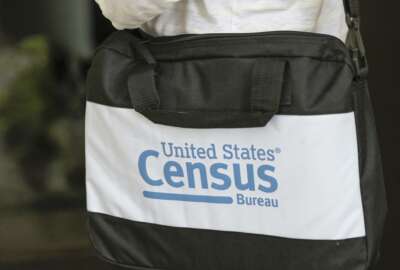

Census Bureau Director Steven Dillingham said the bureau so far has counted 93% of households in the United States, and expects to reach 95% by the end of the week.
The Census Bureau has less than two weeks to reach the remaining 5% of households not yet counted in the 2020 census.
The bureau’s IT innovations have exceeded performance goals, and may have made up for some of the delays from the coronavirus pandemic, which put field operations on hold between March and June.
But with wildfires persisting on the West Coast and hurricanes projected to hit states near the Gulf of Mexico, the bureau’s best-laid plans to finish field operations before the end of the month still leaves some conditions to chance.
Census Bureau Director Steven Dillingham, speaking Thursday at a virtual session of the Census Scientific Advisory Committee, said the bureau so far has counted 93% of households in the United States, and expects to reach 95% by the end of the week.
However, enumerators will complete the final days of field operations, he added, in “one of the most dynamic and challenging environments possible.”
“The Census Bureau’s leadership will continue to adapt, and our operations and decision-making will be flexible and dynamic, as much of this work in ongoing. As circumstances change, so will our plans as we adapt,” Dillingham said.
Ten states have less than 90% of their enumeration complete, so the bureau has sent 5,000 of its top-performing enumerators from states where the work is almost complete to areas that need more help.
The bureau has hired more than 426,000 enumerators, and nationwide, the bureau has completed 82% of its fieldwork, which is ahead of its goal.
Wildfires on the West Coast have led the bureau to send mobile questionnaire assistance teams to areas where people have evacuated.
Al Fontenot, the associate director for decennial census programs, said personnel on the ground have explained that responding to the census will help fund efforts to rebuild and develop devastated regions.
“We have found people are very responsive to that message and they are responding to us in hotels and in temporary locations to make sure that we’re reporting where they were living” as of April 1, the benchmark for every decennial count.
The bureau has sent response teams to states impacted by Hurricane Sally. The bureau is also calling households that have been impacted by these natural disasters and asking them to complete the count over the phone.
However, another storm, Hurricane Wilfred, is also likely to make landfall, which could make the bureau’s final days of fieldwork even more difficult.
“We have concerns. It is not within my vision capabilities to be able to forecast. That’s an unknown at this point in time, whether we’re going to get hit with that or not, and I really can’t predict whether Mother Nature’s going to let us finish, but we’re going to do the best we can,” Fontenot said.
While conditions on the ground are out of the bureau’s hands, its digital infrastructure for the 2020 count has helped keep operations on track.
About 66% of households have self-responded to the 2020 Census, well above the 60.5% that the bureau had expected.
Of those, nearly 80% completed the census online. However, less than 2% opted to complete their questionnaire over the phone, the other new self-response option available for this count.
Enumerators knocking on doors have recorded census responses using iPhones, and using that data, Fontenot said the bureau has been able to more easily flag outliers in a review of enumeration data quality.
“Our handhelds can tell you how long each question took to input the question. It can tell you how long the interview took. It can tell you exactly where you were standing relative to the address that you were supposed to be enumerating,” he said. “It provides us with a tremendous amount of data and it provides that data in near-real-time, and so it allows us to have a very professionally refined quality review of things going on in the field.”
Michael Thieme, the assistant director for decennial census programs, systems and contracts, said the pandemic flattened an expected daily peak of online responses around dinnertime. At its peak, the bureau received 2.1 million responses in a day, and the average user took nine minutes to complete the form.
To protect this infrastructure, Thieme said the bureau stood up a “war room” that went virtual as more employees started working out of the office.
“There’s essentially a 24-hour Skype and audio conference that any one of our rapid response team can hop on at any point and get things going, should situations call for that,” he said.
The bureau’s content distribution networks allowed for sub-second responses when households logged on to complete the questionnaire. It also protected the bureau from denial of service attacks and bots.
This infrastructure also allowed the bureau to implement geofencing, which prevented users outside the continental U.S. from accessing the web questionnaire.
Had an individual “cluster” of servers gone down for any reason, Thieme said that tests demonstrated that the bureau could have fallen back on other clusters
“If one office goes down, it doesn’t affect anybody else going down. And if one cluster or one server goes down, it’s not going to affect anybody,” Thieme said.
The Census Bureau is wrapping up field operations Sept. 30 to give officials enough time to process the data and submit apportionment data by its statutory deadline of Dec. 31.
The bureau earlier this summer planned to keep field operations running through the end of October, but Congress never passed legislation that would’ve extended the statutory deadlines.
Copyright © 2025 Federal News Network. All rights reserved. This website is not intended for users located within the European Economic Area.
Jory Heckman is a reporter at Federal News Network covering U.S. Postal Service, IRS, big data and technology issues.
Follow @jheckmanWFED


